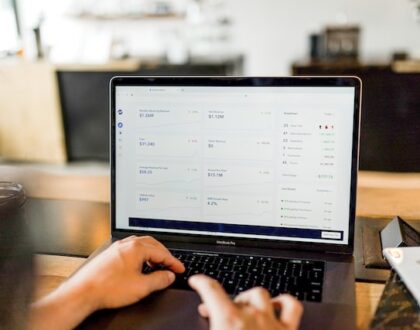Influencer marketing strategy to expand your business through brand partnerships

by local
Influencer marketing strategy to expand your business through brand partnerships
With the rise of social media stars, influencer marketing has flourished in recent years. This form of marketing is far more effective than it appears, which is why an influencer marketing approach is required.
Influencer marketing is more than just likes or shares on social media; it’s the equivalent of a single customer promoting your product to hundreds, if not millions, of friends.
How many other avenues allow you to reach a huge number of perfect prospects who are willing to believe in your product or service?
So, how do you create a successful influencer marketing strategy to help your company grow? Should you go after celebs or small-time influencers? How do you track down these influencers? How do you measure the success of influencer marketing?
This complete handbook will answer all of your questions and more.
Chapter 1: Quick Overview of Influencer Marketing
This first chapter provides an overview of influencer marketing, covering what an influencer is, how to select an acceptable person for optimum ROI, and where to find real influencers.
Then, in the following chapters, we’ll delve deeper into each facet of an influencer marketing strategy, as seen in the table of contents above.
1) So, what exactly is influencer marketing?
Influencer marketing is a business strategy that involves collaborating with popular social media users or bloggers to promote their products and services. Influencers typically have a huge, engaged following through which brands can gain credibility and potentially drive sales.
When you look at Beats by Dre, which Apple now owns, you might wonder why it was so popular. It’s because every superstar, from LeBron James to the Kardashians, has been in television commercials stating, “Hey, you have to wear these headphones.” They’re fine. We’re all wearing them.”
That is an example of influencer marketing.
Many brands’ top marketing approach is to collaborate with influencers. The following are the advantages of influencer marketing:
- Increase your reach.
- Create trust in your brand.
- Increase your social following.
- Boost site traffic.
- Obtain more leads.
- Increase sales.
When you see celebrities and other prominent people you admire wearing or utilizing specific products or services, you are far more likely to buy them yourself.
The many types of influencers you see on social media have hundreds of thousands to millions of followers on Instagram, Snapchat, or YouTube. These people have earned their followers, which is why they are referred to as influencers.
Keep in mind that gaining a following is really difficult. Because of their massive organic audiences, YouTube and Facebook pay these employees well.
2) How to Make Use of Influencer Marketing.
Paying influencers directly for postings is the simplest approach to harness influencer marketing.
Take, for example, Instagram. There are numerous models promoting protein, water bottles, and other related things. These models are compensated by Instagram post. You don’t even have to be a large corporation to benefit from this form of marketing.
Assume you work in e-commerce and sell things. Influencers on the level of LeBron James or Kim Kardashian are not required. I was just talking to an influencer with 500,000 followers the other day. When I asked her how much she was paid, she said she was paid around $800 for every article. She is twenty-four years old. That’s a lot of money for very little work at that age.
If your e-commerce company pays $800 for each post and your average order value is $50, the numbers start to add up in your favor. Assume one of this woman’s ads nets you $5,000 in orders. That’s the kind of deal you’d do all day, every day.
In fact, you’ll need to find even more Instagram influencers. This is something you should bet big on.
3) The Most Important Thing I’ve Learned Through Influencer Marketing.
I’ve been using an influencer marketing technique for quite some time. I’ve even done it for my personal brand to see if I can increase my popularity, which would assist increase Single Grain and Growth Everywhere’s total brand awareness.
What I discovered was that when your influencers publish seldom, it has little impact. However, if you have a large marketing budget and consistently and frequently do it, you can truly build a movement.
I didn’t have Beats by Dre’s budget, so I did the next best thing. I attempted to have influencers post once a week, on a set day, every week. I noticed a significantly larger impact when I had all of the influencers do it on a Monday or Wednesday and stayed on that timetable.
That’s because thousands of individuals saw my name and brand from different influencers in the same location in those precise days. “Wow, I’m not just seeing one or two photographs, I’m seeing five, six, or seven on the same day from this company or of this product or service,” they think. Maybe I should go check it out right now.”
However, seeing it irregularly throughout a week does not have the same impact as seeing it at a rapid-fire frequency in a short period of time.
Last but not least, you should track your influencer ROI using specific promo codes. You can then measure the effectiveness of any specific campaign from any given influencer.
Now that you have a fundamental understanding of influencer marketing, let’s get started on expanding your brand with an influencer marketing strategy.
Chapter 2: Using Mutually Beneficial Influencer Marketing to Grow Your Business.
Referrals have long been recognized as one of the most efficient marketing tactics.
If you have a problem and one of your friends tells you about a terrific solution, chances are you’ll go buy it.
Influencer marketing is similar, but on a larger scale. When influencers tell their friends and followers about how fantastic your product is, their audience is more likely to convert since they need the product and believe the influencer.
In order to track the effectiveness of the campaign, the seller or marketer will typically provide a special discount code only for the influencer’s audience.
1) The Increase in Brand Influencer Partnerships
Micro influencers’ recommendations are followed by around 82% of people.
Long-term ties are increasingly being formed between brands and influencers. Long-term partnerships are not only more appealing to influencers, but they also give a significantly higher ROI. On the Marketing School podcast, for example, we have a single partner, DreamHost, who has renewed with us over the years. Clearly, that partnership is still valuable, therefore they are running the campaign.
It’s no surprise that the influencer marketing industry is predicted to increase from slightly more than $13 billion in 2017 to at least $15 billion by 2022. Businesses must find a way to thrive as paid ad expenses on social networks such as YouTube and Instagram continue to grow. This is where influencer marketing comes into play.
The influencer marketing industry has a long way to go before it becomes saturated, but because it works so effectively, we anticipate it to become more expensive shortly.
Still not sure if you should jump on board?
Look to check if other firms in your industry are using influencers in their advertisements. You’ll undoubtedly notice that some are, and if any of them have been running advertising for months or years, it’s a solid indication that they’re effective.
Even if no one in your business is using it, it can be worth finding a highly compatible influencer and testing it out.
2) Why Do Brands Use Influencer Marketing?
Because influencer marketing is still a relatively new tactic, it remains a viable option for marketers ready to go outside the box when it comes to developing trust with their audience.
Here are some of the reasons why brands are turning to influencer marketing.
Influencers wield significant power. Approximately 55% of consumers read at least four reviews before purchasing a product, and approximately 84% have made a purchase based on an influencer’s recommendation. It’s difficult to deny the influence of these unofficial brand ambassadors.
Influencers are social beings. Oberlo claims that everyone, including your grandparents, utilizes social media.
Influencers Have an Impact on SEO. Having an influencer assist you in increasing your follower count on numerous social media sites, especially TikTok and Instagram, enhances your SEO. While social presence isn’t a proven ranking element, it does communicate to search engines that you have a large following, which they associate with brand quality. Brands, as you are probably aware, are the way of the future.
3) Brand + Influencer: Create a Win-Win Situation
Your influencer program, like any other relationship, should be a two-way street. If your brand is the only one that benefits, you won’t be able to convince anyone to collaborate with you, and if they do, they generally don’t have a large following.
The typical formula goes something like this: Total rate = $100 x 10,000 followers + extras
Influencers can be compensated in a variety of ways, including:
Cash. This is the most prevalent type of remuneration. Most influencers prefer and will request this strategy. Just make sure the person is actually committed to your company and will put their heart into the endeavor rather than simply taking the money and running.
Free or discounted product. Why not give someone a free product or a discount in exchange for a mention? GymShark’s user base was initially built in this manner. When influencer marketing was still in its infancy, companies would send complimentary products to YouTube influencers, who would then wear the products in videos.
Commission. This is a win-win situation since both parties have a stake in the outcome. You pay the influencer to promote your brand to their audience, and any sales they produce result in a commission paid to the influencer. This is one of the better options as long as the commission structure is fair.
What Attracts Influencers to Brands?
First and foremost, 96% of brands seek long-term partnerships that result in repeated campaigns. Rather than splitting your investment across multiple influencers, choose a few high-quality influencers and cultivate genuine relationships with them.
It’s also critical that you align closely with their target audience, as 72% of influencers say brand alignment is the most crucial aspect when selecting a business.
Furthermore, influencers prefer to have creative flexibility since one-third of influencers think a brand with strict limitations is the biggest turn off.
Set a Budget and Monitor Your ROI
Set a budget before you get too excited and influence your way into bankruptcy. If this is your first time using influencer marketing, start with minimal expenditure to see what works and what doesn’t. By tracking your ROI, you’ll know what’s working and what isn’t, allowing you to fine-tune your plan and boost your budget in the future.
Chapter 3: Influencer Evaluation for Your Marketing Campaign
Let’s start with some examples of influencer marketing collaborations.
According to a Qualtrics poll, around 91% of consumers aged 18-34 trust online evaluations as much as a personal recommendation, which leads to an important conclusion: Customers trust complete strangers more than well-known organizations.
Here’s how to assess influencers for your brand.
Reach on social media.
An influencer is only considered influential if they have the ability to affect the purchasing decisions of others. Doesn’t that make sense?
The greater the reach, the more people will see your goods or service. A user with 1,500 followers on Instagram may be able to achieve some results, but a user with 150,000 followers can really push your message to your target demographic.
Naturally, bigger isn’t necessarily better. You should also evaluate previous involvement since this will help determine whether the person’s audience listens to what they have to say.
Using Instagram as an example, a person with 15,000 followers may earn an average of 500 likes on each update. A user with 30,000 followers, on the other hand, may only receive 100 likes per update.
While the individual with the most followers will bring your business to the attention of more people, the update may not garner as much attention. This is a balancing act with some trial and error.
Depending on your budget and desired degree of interaction per follower, you could want to consider a micro-influencer or an influencer with a smaller (often up to 10K) audience in a certain niche. Again, a macro-influencer may recommend you to millions of people, but how many of them are actually listening? Are they truly willing to interact in the same manner that someone in your specialty would?
Rates of Influence
What influencers charge:
- $10-$100 per post for nano-influencers (1,000-10,000 followers).
- $100-$500 per post for micro-influencers (10,001-50,000 followers).
- Influencers with 50,000-500,000 followers: $500-$5,000 each post.
- $5,000-$10,000 per post for macro-influencers (500,001-1,000,000 followers).
- Mega-influencers (1,000,001 or more followers): $10,000 or more per post.
Making a Database
Rather than randomly contacting numerous influencers, develop a database of the most promising influencers in Google Drive or Docs.
Here are the key elements you should include in your database for each influencer you research:
- Name.
- Niche.
- Fan base size.
- Social media platforms (and links to them).
- Excellent points.
- Points of weakness
- Contact information
- Observations: note their quirks (frequent usage of video, a fantastic sense of humor, a lot of commercials, our opponent has him/her under contract, etc.).
Platforms for Influencers
Influencer marketing platforms offer searchable databases of influencers to assist marketers in finding the best fit for their campaigns.
The advantage of adopting such a platform is that much of the work has already been completed for you. The influencers are pre-vetted, and their profiles include a wealth of information about their specialization, activity on various channels, fan base count, and so on.
Chapter 4: SEO: Influencer Outreach for Link Building
Before I teach you how to use influencer marketing to increase your SEO, let me explain why it works.
1) How Influencer Marketing Can Help You Improve Your SEO.
Here are four ways that influencer marketing can improve the SEO of your company.
- Increase Brand Awareness. When you collaborate with established industry leaders, you may cut the time it takes to raise exposure for your new brand. It’s no surprise that 67% of marketers use influencers to promote content, particularly those with a loyal following of hundreds of thousands of people.
- Obtain backlinks. When you reach a broader audience with influencer marketing, you get a lot more chances to create backlinks. Google employs links as one of the most important ranking elements in search. When you collaborate with bloggers through guest posting, product reviews, or other means, you almost always get a new link back to your site.
- Increase your social media followers. SEO professionals frequently debate whether social media marketing has a direct impact on PageRank in search engines. In any case, most people agree that having a strong social media presence corresponds with having a stronger SEO. When your company interacts with a new social audience, it opens the door to more followers and engagement. This can result in increased site traffic, backlinks, and other SEO-boosting variables.
- Produce More Natural Content. The more content you develop through influencer marketing, the greater chances your business will have of ranking in Google search results. Assume your company is new, and your domain authority isn’t high enough to rank well. If you create a guest post for a large site, your material will most likely rank considerably higher in search results while also spreading the word about your company.
Chapter 5: Tools for Identifying Influencers and Tracking Marketing Campaigns
If you’ve read this far (congratulations!), you now completely understand the power of influencer marketing. But what good is this power if you don’t use it?
Tracking your influencer marketing efforts is a crucial approach for making informed marketing decisions and increasing ROI. For many brands, the one-dimensional data gained through UTM codes and social impressions are just insufficient to leverage the value of influencer marketing.
Top Tools for Finding Influencers and Tracking Marketing Activities:
1) Traackr
Traackr, as the name suggests, is one of the best tools for creating and tracking an efficient influencer marketing campaign. Traackr was designed to assist brands in managing their connections with influencers, but it also includes a number of tools that allow you to track the impact of your campaigns.
2) Dealspotr Marketplace
The Dealspotr Marketplace is a free influencer marketing platform that combines the advantages of a coupon website with a CRM-style management system for tracking your influencer marketing campaigns. You may add exclusive codes to the platform, search Dealspotr’s database for micro-influencers to promote these codes and your goods, and track everything from a single dashboard.
3) Klear
Klear is first and foremost, a tool for finding and working with influencers, but it has also evolved into a sophisticated platform for managing and tracking campaigns. Klear is completely equipped to assist you in locating, analyzing, managing, and monitoring your influencers.
4) GroupHigh
GroupHigh is a one-stop shop for finding bloggers and social influencers, managing your relationships with them, and calculating the effect of the material they make for your company or agency.
5) Onalytica
Onalytica is influencer relationship management software that assists you in locating, contacting, and tracking your influencers. It provides an astonishing quantity of data to assist you in tracking and measuring your efforts.
To help you optimize your campaigns, Onalytica offers influencer-finding software, a relationship management platform, and professional services. If you’re looking for tracking tools, check out their Influencer Relationship Management (IRM) software.
Begin Your First Influencer Marketing Campaign Right Now!
Despite its growing popularity, influencer marketing remains an underutilized channel and will remain a significant marketing approach for firms for many years to come.
Now that you know everything there is to know about influencer marketing, launch your first campaign right away. A great influencer marketing technique is one of the most potent marketing tactics for quickly tapping into new audiences and producing quality customers.
Recommended Posts

3 Reasons Why GA4 Outperforms UA
April 8, 2024


